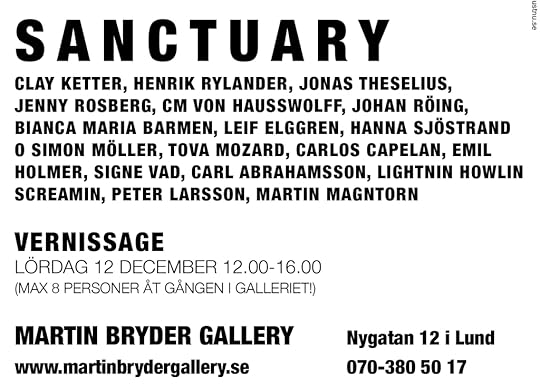Carl Abrahamsson's Blog, page 32
February 9, 2021
Different People is available!
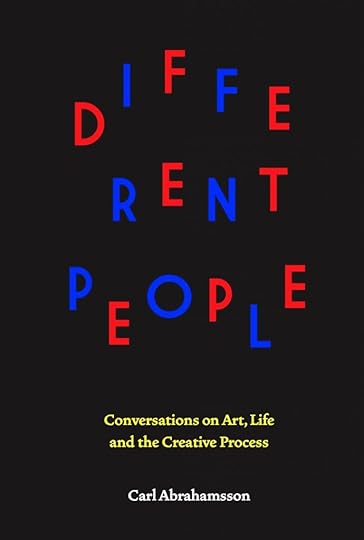
“Different People” is an anthology of interviews by Swedish author Carl Abrahamsson, focusing on art, life and the creative process. Included are in-depth conversations with Conrad Rooks, Malcolm McLaren, Stelarc, John Duncan, Charles Gatewood, Mark McCloud, Ralph Metzner, Peter Beard, Bill Landis, Ralph Gibson, Maja Elliott, Michael Bowen, Bob Colacello, Dian Hanson, Anton Corbijn, June Newton, Kendell Geers, Simeon Coxe III (Silver Apples), Vicki Bennett (People Like Us), and Brian Williams (Lustmord). These groundbreaking artists, writers, musicians, photographers, filmmakers, editors and psychedelic researchers have all helped shape the culture we live in. But what makes them do what they do? Which are their driving forces and their inspirations; their joys and fears?
Trapart Books, 2021, 6 x 9” paperback, illustrated with photographic portraits, 292 pages.
January 29, 2021
Into the Devil’s Den on BluRay!
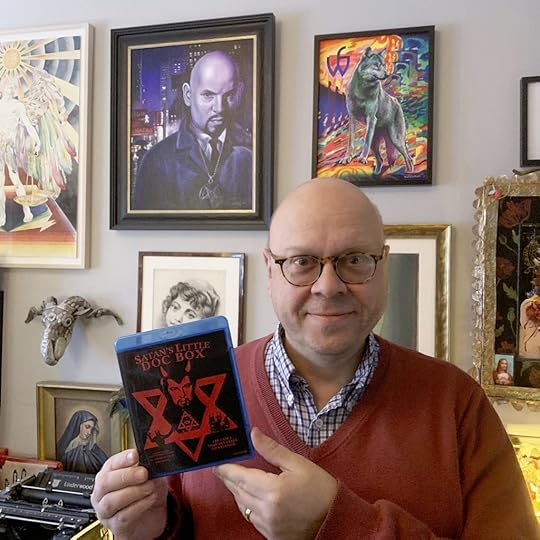
Satan’s Little Doc Box is now available as a handsome BluRay! Containing my film “Anton LaVey – Into the Devil’s Den”, plus the documentaries “An American Satan” and “Hail Satan?” Talk about a great infernal deal! And with great liner notes (in Swedish) by the one and only Mixologist Misanthropo-Meister Anders Lundgren!
It’s a Swedish release but the disc is supposedly region free. Here’s the label’s info on where to order this BluRay.
January 26, 2021
The Mega Golem book is here!
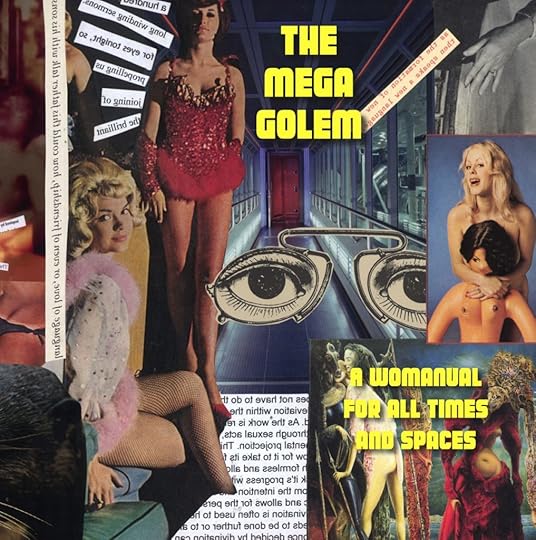
The Mega Golem: A Womanual for all Times and Spaces – Carl Abrahamsson (ed)
An anthology volume celebrating a decade of occult mischief by the “Mega Golem.” Originally conceived by Swedish author Carl Abrahamsson as a “quantum quilt” project that artists and magicians can contribute to, the Mega Golem now has a life of its own. Whether its parts and abilities are known and tangible or secret and ethereal, the impact of its presence is undeniable. It weaves a special kind of magic for the 21st century, in and through art and talismanic approaches.
Is this being invisible? Indivisible? Invincible? Intangible? Whose desires and dreams are incorporated in the sinews and cells of this benign mutation of our inertly causal culture? The Mega Golem is the poetic transcendence of expected transgression, and as such a psychosexual embrace from behind the front-lines. Free for all, and dreams made flesh! This first Mega Golem book collects ideas, theories and artworks that all constitute its first incarnation. This book is therefore nothing less than a Magical Womanual for any and all who are willing to believe wholeheartedly in the disbelief of psychic prestidigitation and its many emotional pitfalls.
With contributions by Carl Abrahamsson, Vanessa Sinclair, Kadmus Herschel, Gabriel McCaughry and others.
Trapart Books, 2021, 8,5 x 8,5” paperback, with colour illustrations, 84 pages.
January 22, 2021
The Fenris Wolf 8 howls again!

The Fenris Wolf 8 is now finally available again:
The Fenris Wolf is a research journal focused on the human mind, developments in comparative magico-anthropology, and on the occultural implications and applications of these fields of study. This volume contains material by Genesis Breyer P-Orridge, Nina Antonia, Gary Lachman, Erik Davis, Vanessa Sinclair, Carl Abrahamsson, Charles Stansfeld Jones (Frater Achad), Kendell Geers, Jason Louv, Timothy O’Neill, Derek Seagrief, Alexander Nym, Stephen Sennitt, Henrik Dahl, Kasper Opstrup, Antti Balk, Aki Cederberg, Michael Moynihan, Friedrich Hielscher, Orryelle Defenestrate Bascule, Zbigniew Lagosz, Bishop T Omphalos, Johan Nilsson, Gordan Djurdjevic, Carey Hodges, Chad Hensley, Zaheer Gulamhusein, Ingo Lambrecht, Hagen von Tulien, N, Kadmus, Stojan Nikolic, Miguel Marques and Renata Wieczorek on topics as diverse as polymorphous perversity and pandrogeny, Alchemy, Lord Alfred Douglas & Aleister Crowley, Indian erotic art, Polish magicians, rejected knowledge, Intuition, the Ecclesia Gnostica Catholica, Crowley & Daoism, H.P Lovecraft, Robert Anton Wilson, August Derleth, Greek mysteries, psychedelic art, New Orleans Voodoo, Kabbalah in contemporary culture, Ritual & Analytical spaces, religious Scientism, death/exit horoscopes, new poetry and much more… A smorgasbord of occulture & delightenment! Trapart Books 2021. 6 x 9” paperback, 334 pages. Cover painting by Andreas Kalliaridis.
(Please choose the Amazon site closest to you, to save on postage!)
January 9, 2021
A Felt Hat Review interview
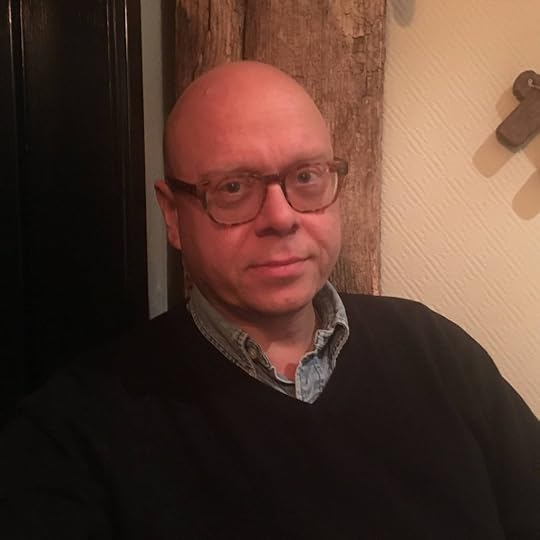
I was recently interviewed by Hubert Heathertoes of The Felt Hat Review. Here goes:
When we talk about the progress and the artist’s body of work, there is always a narrow margin where the inspiration comes into the scene? How that (un)godly particle worked in your early years?
Well, inspiration is something you can’t really neglect. It’s the spark that leads to the fire of creation. It goes beyond concepts like “motivation” and “drive.” In order to do anything beyond the merely causal and mundane, you need inspiration – a breath of fresh air. And the best way is simply to be aware and open-minded as you’re exposed to different kinds of input. I grew up in a cultured home and had lots of input. That meant I could freely orient myself and see what filled me with a resonance that could then be nurtured into pure inspiration. A lot of that came from negation, actually. Learning what you don’t like teaches you what you actually do like. I early on liked horror films on TV, and that seeped through because my parents liked them too and let me watch them. I liked comics in general, like most kids, but then gradually learnt where to get comics of a more refined kind. Later on, the same for music and books. I took it seriously and allowed myself to drift and explore, trusting my own intuition and inspiration. I’m still doing that.
Occulture has many definitions – how do you define it in your own work as a lecturer, musician, photographer, filmmaker, author and publisher?
Initially, it was the combination of the words: “occult” and “culture.” Genesis P-Orridge put them together in several brilliant analyses of contemporary culture. Over the decades it has become an egregore in itself: a tangible manifestation of a synthesis I believe is necessary for our survival. Basically, opening our minds and hearts and looking at what has worked before, in different cultural spheres, and as multidimensional solutions to current problems. I call this the “transition into the cultureal.” I think that in my own case, I’ve used it and developed it both consciously and unconsciously. Unconsciously in basically all expressions that aren’t strictly text-based: film, music, photography, etc. I can clearly see that I’ve woven in elements, methods, particles, themes, and so on that are decidedly “magical” without being strategic or consciously aware of it. But it’s only natural to me, as I’ve been involved in this kind of lifestyle for such a long time now. Consciously, I have very much used it to my own advantage, and hopefully also developed it. I have written and lectured about many aspects of occulture and the cultureal. It’s a fascinating subject dear to my heart & soul. I define it basically as manifestations of culture that to some degree contain the potential of inspiration and incentive via structures or seed that stem from an area or cultural sphere that has traditionally been called “occult.”
There is a certain aspect of what you are doing – I am thinking of personal stories of interesting personas like Brion Gysin or Genesis P-Orridge. It shows the spectrum of how the esoteric tradition was modified and moulded into a completely new paradigm influencing both contemporary occulture and to some extent pop culture. What brings you to those fascinating characters?
I have always been curious and networking. I’ve collected material and meetings, and I still like that a lot. That’s why I became a journalist early on, even with my own fanzines. I felt a need to “relay;” that is, to write about things and people that had affected me in some way – most often in beneficial ways. I have always contacted people who have interested me, and one thing always leads to another. Some turn out to be not so interesting, whereas others last a lifetime or more. In one sense it’s about information, but I would say that to an equal degree, my fascination has been about the phenomenon you asked about first: inspiration. I want to connect to the source of the inspiration I feel, and then move it all onwards.
Another interesting part is your music. How does it work with other parts of your work and could you tell a bit about the process, please?
I’m usually in a kind of Gesamt bubble, and it’s a nice spot to be in. I put words to music I’ve made, or make a piece of music to go with a particular text or poem. A photograph becomes the record cover, and I may make a film to go with the piece in question. I like it when all of the exciting creations and/or possibilities are used together. I like music for many reasons. One of the main ones being that it’s an emotional sphere. It’s a pool I need to bathe in occasionally; otherwise I’m stuck in the intellect. Music is pure pleasure because it makes me experience and explore visionary strata. Whether it’s my own music or that of others, it has the capacity to move me in magical and evocative ways. A picture can do that too, of course, but it’s much easier to travel inside when you have your eyes closed and some emotionally evocative music in your ears.
We are talking about the work related to art, but how does the magickal process work for you in a daily life, both in practical and philosophical sense – in terms of transforming and understanding the tissue of reality?
I can’t say that I could distance myself from it, even if I wanted to. “It” being the magical process. It’s all-immersive, all-permeating, and has been for a long time. What that means is that my overall frame of reference in life is my own exploration of not only occulture as a singular, separate phenomenon, but also of a number of attitudes and approaches that could be labelled “occult” (in the traditional sense). Meaning, for instance, that I use meditation and various forms of daily rituals as positive, creative and health-inducing agents of balance and happiness. I’m also very interested in learning ever more about how these or similar approaches have been used in cultures and times other than my own. Hence I usually reply that I’m a “magico-anthropologist” when people ask what my profession is.
How does lecturing about esoteric knowledge work in academic environment in comparison to how it was before?
This is hard for me to answer because I haven’t done it in a couple of years. But I suspect it’s expanding; it seems to be. At least quantifiably, with more students, chairs, opportunities, publications, etc. It is certainly a great and fascinating area, but I fear that the academic psychology/method will turn it all into just another echo chamber in which their works simply reference works of a similar nature stemming from safe and expected/accepted sources. Academia is generally a quasi-autistic esoteric environment in itself, so I believe that academics studying “esotericism” will open some kind of psychic portal of absolute abstraction in which they will all disappear. They will probably not contextualize enough, but can probably do a good job archiving material.
Plans for the future?
More of the same, basically. I’m always working on many book projects at the same time. I hope to write four new books this year. This year, there will also be two new issues of The Fenris Wolf. I also plan to finish four films in my documentary series AN ART APART, and possibly another fictional feature film too. I have a new musical project with the great Joachim Nordwall, called “Mononom.” Our first album will be out this year, and I think I will make another solo album, too. I’m also always working together with my wife, Vanessa Sinclair, on many different projects so I’m sure this year will see some new music, books and films by us, too. But it basically always comes down to the writing. That’s what I love the most, and I feel totally blessed and blissed to be able to get up in the morning and just write.
Photograph by Vanessa Sinclair
Please check out The Felt Hat Review HERE!
December 31, 2020
Summing up in 2020 vision
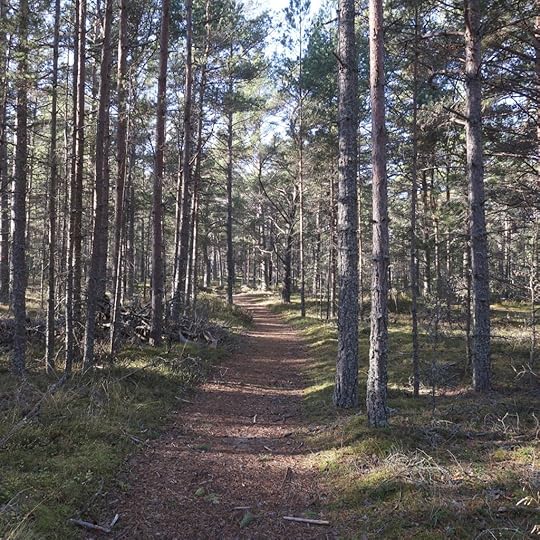
What a year! A tumultuous ride through highs and lows, sighs and blows. And it just didn’t seem to want to let go… But eventually it did! Hooray!
What happened?
In time for Genesis’s 70th birthday on February 22nd, Trapart Books published Genesis Breyer P-Orridge: Sacred Intent – Conversations with Carl Abrahamsson 1986-2019. Very happy to have achieved that, and so was Gen.
As Vanessa and I were preparing to go to New York mid March to promote that book and have a book talk and signing together with Gen (as well as a million other fun things!), the pandemic hit. We cancelled our trip at about the very same time as the US barred people from coming in… Faît accompli, and a spiral, viral bummer to boot.
And even more so the news of only a day or two later: Genesis died on March 14th, 2020. Although we’ve been able to process this demise for some nine months now, it’s still hard to fully come to terms with.
Then it was full on pandemic time, which basically meant self isolation for us. As both Vanessa and I already work from home, the transition was pretty minimal. We just get up in the morning and work, and then we go to sleep. Whatever social interactions we may have had were so minimal anyway, so that was never a big deal. For this, we’re very grateful. Taking into consideration how other people are absolutely in need of social contacts for work and/or other reasons, and thereby expose themselves to the virus, we have indeed been very blessed.
We have read more than usual, plowing through the shelves in joy and literary arousal. We have watched more TV and movies than usual. And we have certainly worked more than usual. Where to even begin…?
Vanessa produced a large amount of podcast episodes for ”Rendering Unconscious.” And she wrote a book, too: The Cut In Creation: Scansion In Psychoanalysis and Art was published by Routledge in November, and is a great overview of art and artists in some way using the concept of scansion and/or other forms of more literal cuts and cut-ups.
I wrote three books: The Devil’s Footprint (Trapart Books, 2020), Anton LaVey & The Church of Satan (Inner Traditions, forthcoming, 2021), and a secret novel in Swedish (forthcoming).
It was also a year of books in other ways: I started a republishing process of all The Fenris Wolf volumes. As many of them had been sold out for quite some time, it was now high time to re-release them. As I write this, all volumes but three are available again. Oh, that’s right: The Fenris Wolf 10 was published, too! It’s the biggest volume so far, with its 422 pages of thought provoking occulture and pure delightenment.
I also started a specific The Fenris Wolf newsletter for all occultural aficionados of Wolfie.
I finished one film this year: ”Jag är som flugan på väggen – En film om Lars Sundestrand.” It’s a documentary about the brilliant Swedish photographer Lars Sundestrand, who once upon a time had a fanzine called Funtime, which was highly influential for me during my own fanzine days.
I decided to let all other film projects rest a bit, and focus on my own writing and the books. But that certainly didn’t mean there wasn’t any film action… ”Anton LaVey – Into the Devil’s Den” and ”Cinemagician – Conversations with Kenneth Anger,” both completed during 2019, did well during 2020. They will both be available on several new platforms/media during 2021.
Oh, and there was ”23rd Mind TV,” too. Vanessa and I decided that we wanted our own TV-show, so we made one with help and support from our Patreon patrons. There is always so much to talk about! We have made seven episodes of ”23rd Mind TV” so far, and they all contain us talking about our work, plus the work of others, plus assorted videos. It’s probably the best TV show in the world!
Oh, and there was ”Radio Mega Golem,” too. This project has grown phenomenally over the past years, and many nice people have added to the creation of the magical being called the ”Mega Golem.” So far, there have been five episodes of Radio MG. Great news in regard to the Mega Golem is that early 2021 will see the release of a very special Mega Golem book… It’s a volume that sums up writings and artwork focussed on this unique talismanic being, including some of the Radio Mega Golem material.
What about music, then? As for myself, I focussed on writing this year, but Highbrow Lowlife still managed to put out some interesting releases. We began with my ancient solo album ”No Longer Longer,” and followed suit with a whole lot of Vanessa: album collaborations with Akoustik Timbre Frekuency, Douglas Lucas, and Jillian Street/Damages. We also released Vanessa’s and my old albums from 2016, ”Switching” and ”Mirrors,” plus the brand new ”The Pathways of the Heart (for Jess).”
Speaking of collaborations with wifey, we have also worked on a jointly written novel, The Exquisite Corpse. It is exactly that: we take turns writing the chapters without talking about it to each other. So far it’s a wild and trippy neo-noir starring the Satanic detective Father Black and the cutting edge shrink Ivy St Clair. This novel is written exclusively for our patrons at Patreon, in two chapters per month. It’s accumulating nicely and morbidly, that’s all we can say!
Speaking of Patreon: it’s been our main social media hub this year, and definitely the most fun one. We love all our patrons, and share more personal stuff with them than we do on other platforms. THANK YOU, PATREON PATRONS! Here’s to a great 2021!
So, all in all, it doesn’t sound like a too bad or too crazy year, does it? But… Still it was.
My dear friend Genesis P-Orridge died, my favorite artist Peter Beard died, my aunt’s husband Lars Lindblom died, one of Vanessa’s oldest friends in Florida, Jessica Marshall, died, one of my oldest friends, Michael Matton, died. None of them from Corona-related causes, but still… A year of feeling utterly bereft.
Let’s not even go into the politics of the American Kindergarten kind… Or the Corona thing itself, or its global effects… I guess if one wanted to see the positive aspects of any of this, it’d probably be as some kind of extremely timely and urgent wake-up call. Whether humans are actually intelligent enough to wake up remains to be seen. I have my doubts, but… We shall see!
On that ambivalent note, I wish you all a very healthy, wealthy and wise New Year 2021! Let’s make the most of it!
Carl Abrahamsson, Stockholm, Dec 31, 2020
December 25, 2020
Cinematicks: Seven Years In Tibet (1957)
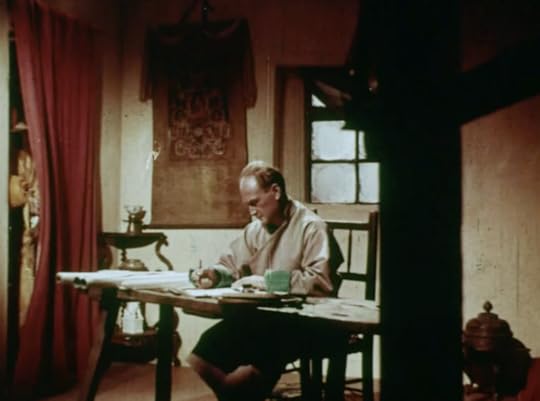
Some people are just larger than life. Whatever happens to them seems to be filled with magic and serendipities. Meetings, travels, adventures, creativity and all the other things that matter in life are sprayed like stardust on their brows, and they roll with it in inspiring ways.
Austrian mountaineer Heinrich Harrer (1912-2006) was certainly one of these people. While on an expedition to climb the Nanga-Parbat peaks in the Himalayas, the second world war broke out. Harrer was interned by the British in India, but managed to escape after several attempts. He went straight over the Himalayas together with fellow mountaineer Peter Aufschnaiter and headed for the almost mythical capital of Shangri-La-cum-Tibet. That is, Lhasa.
Not only did they reach Lhasa; Harrer also eventually became the teacher of the 14th Dalai Lama and stayed for… That’s right: seven years in Tibet. As if that wasn’t cool enough, the Dalai Lama also provided the Austrian with a home movie camera, so he could document Tibetan life and customs. It was a like a secret deal between the two, and the rolls of films had to be smuggled out of Tibet in order to be processed!
As the Chinese started making trouble in 1950, Harrer decided to leave Tibet, while at the same time documenting the Dalai Lama’s excursion into temporary safety. The Tibetan leader, however, decided to stay on in Tibet. But when the Chinese invaded full scale in 1959, the Dalai Lama had no choice but to go into proper exile in India.
By then, Heinrich Harrer had returned to Europe and already written his bestselling book Seven Years In Tibet (1957). To tie in with the success of the book, director Hans Nieter assembled a ”drama documentary” of the same name.
Nieter & Harrer’s film is a simple one. (Re)enactments of key events in the story constitute the basis, with Harrer and Aufschnaiter playing themselves (!), and with buddhist words of wisdom conveyed by actors in costume. But it is Harrer’s own material that makes this film truly unique. Scenes from daily life in Lhasa, monasteries, traditional dances, processions, the Dalai Lama blessing people (and mischievously smiling at Harrer’s hidden camera), and the stark landscape of the Tibetan Himalayas create a mosaic into which the narrative reenactments almost become secondary in importance.
It’s a weird film, in the sense of ”temporary dissociation” or ”displacement.” You’re not always sure where you are in the big picture, but there are loose threads enough to put you back in your place as viewer. In some ways, this film is an unknowing ancestor of the Italian Mondo films; taking you on a wild ride through a Ripley-esque (as in ”Believe It Or Not!” – not the Patricia Highsmith kind) assemblage of weird and unique phenomena of the world.
No matter what, ”Seven Years In Tibet” is a wonderful and absolutely mind-boggling film. What it lacks in technical expertise and polished narrative surfaces, it more than makes up for in hyperreal acumen and magical inspiration.
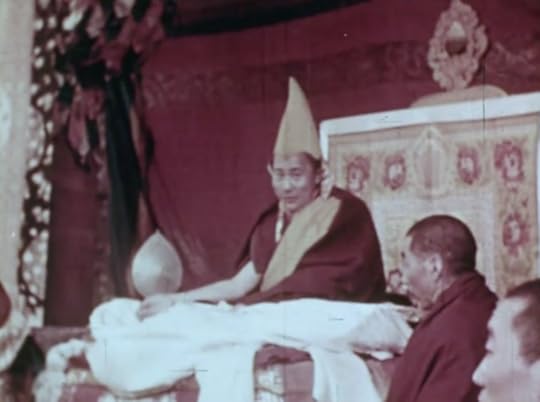
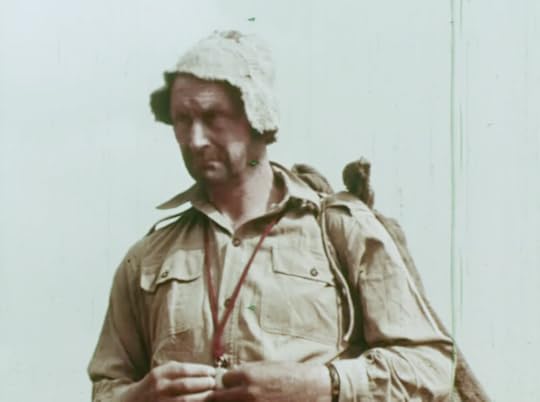
December 21, 2020
Back to Conspirinormal!
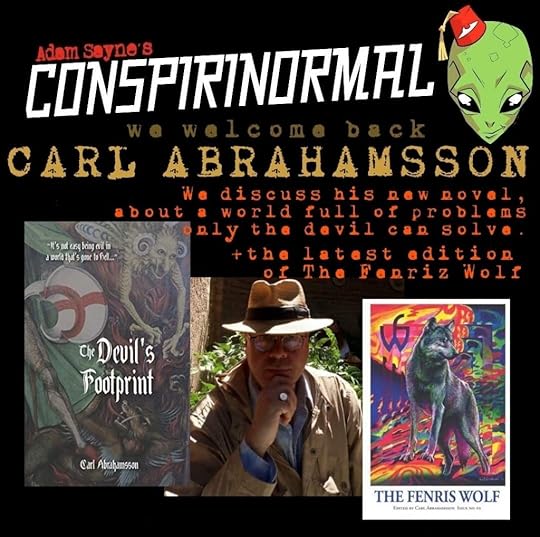
I’m on the great Conspirinormal podcast again! The Devil’s Footprint, The Fenris Wolf 10, COVID, the power of satire, the dangers of dualistic mind-frames, occulture, the transformation potential of magic… and more!
December 12, 2020
A new Fenris Wolf podcast episode
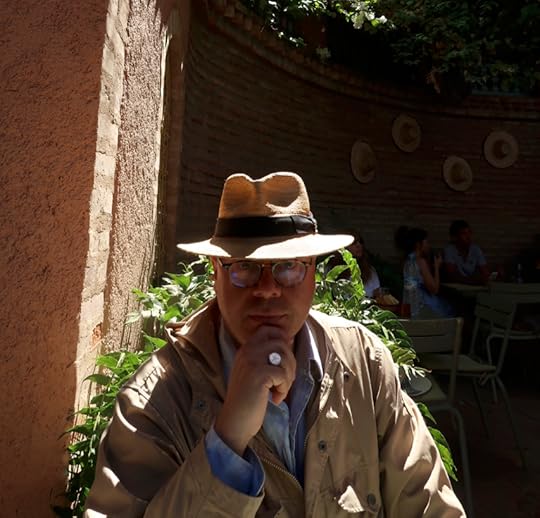
Please enjoy the second lecture/podcast in the Fenris Wolf series. This one is called “Onwards to the Source!” Shamanism & Magico-anthropology to the People, forever and in all dimensions!
If you enjoyed this recording, you will very likely enjoy the rest of The Fenris Wolf 10: 422 pages of inspiring occulture and pure delightenment.
This jubilee volume contains material by Ludwig Klages, David Beth, Henrik Dahl, Peter Sjöstedt-H, Jesse Bransford, Max Razdow, Christopher Webster, Kendell Geers, Kadmus, Billie Steigerwald, Fred Andersson, Zaheer Gulamhusein, Charlotte Rodgers, Craig Slee, Damien Patrick Williams, Philip H. Farber, Thomas Bey William Bailey, Mitch Horowitz, Ramsey Dukes, Anders Lundgren, Peggy Nadramia, Nina Antonia, Jack Stevenson, Andrea Kundry, Joan Pope, Genesis Breyer P-Orridge, Vanessa Sinclair, Claire-Madeline Corso, and Carl Abrahamsson…
… On topics as diverse as magico-anthropology, sexual magic, eroto-psychedelic art, Friedrich Nietzsche’s use of psychoactive drugs, the occult meaning of the Fenris Wolf in Scandinavian Asatro, joint dreaming, mytho-historical traces within Völkish photography, the magic and influence of African art, disease as magical incentive, Cripkult, daoism, buddhism and machine consciousness, memetic entities, memetic magick, the transformative power of causative thinking, an interview with author Gary Lachman about Colin Wilson and his magical writings, dark Hollywood, Mike “Hellboy” Mignola and the Lovecraft connection, the full story of Benjamin Christensen’s cinematic masterpiece “Witchcraft Through the Ages (1922), the full story of Anton LaVey’s Satanic Bible, the gnostic-alchemical eroticism in the art of Joan Pope, Genesis P-Orridge’s memories of a life of occultural experimentation, and much more…
Trapart Books 2020. Cover art by Val Denham. 6 x 9” paperback. 422 pages.
For more information, please visit:
Please sign up for the Fenris Wolf newsletter:
https://thefenriswolf.substack.com/
Please support this and our other endeavours by joining our Patreon:
https://www.patreon.com/vanessa23carl
Thank you for your interest and support. Keep on howling!
Carl Abrahamsson, Stockholm, December 12th, 2020
Photograph by Vanessa Sinclair

